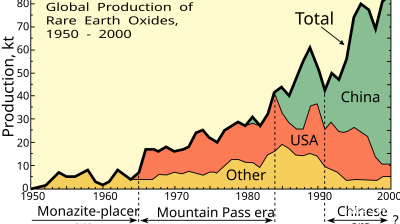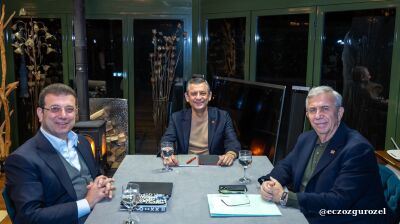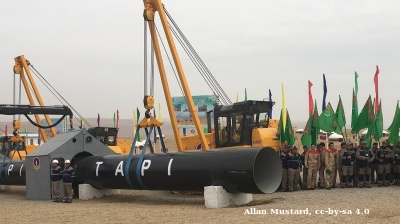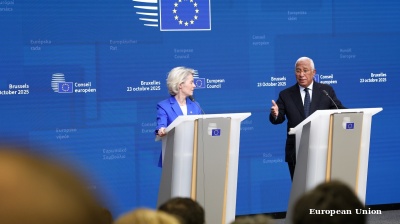Russia’s imports crashed after the invasion of Ukraine in February as Western trade partners “self-sanctioned” and simply cut supplies to the country off while around 1,000 firms promised to pull out altogether, according to a report by Yale. But they have been recovering and are now expected to end the year down by only 10% as Russian firms find new suppliers in the east, or dodge the sanctions by using parallel import schemes.
As the war drags into its ninth month, Russian firms have been working hard to find alternative suppliers, and countries like Turkey, Azerbaijan and Belarus have stepped into the breach with exports to Russia soaring to well above pre-war levels in the first eight months of this year compared to the same period a year earlier. Many of the more sophisticated products like semiconductors and high-quality machinery are still missing, but consumer goods and basic agricultural and industrial inputs have mostly reappeared.

“By September, Russian imports [had] offset a significant part of its losses, contributing to c.9% of the ruble depreciation since June. However, its further recovery is muted,” Natalia Lavrova, an analyst with BCS GM, said in a note. “Hence the next wave of the ruble weakening will be driven by subdued export[s] in response to the oil embargo [that is due to start in December] – the Russian currency may go as far as RUB64.5/$ by YE2022.”
The Russian economy had recovered around three quarters of its April import lows by September, according to BCS GM’s estimates, with the main growth coming from imports from China and the Eurasia Economic Union (EAEU) members.
Trade with China was also briefly halted in the spring, but rapidly bounced back, with China now having overtaken Europe to become the country’s biggest partner. Russia’s bilateral trade with China in 2021 reached $141bn – the same value as the volume with Europe now – of which Russian exports to China amounted to $68bn.
The volume of trade has already surpassed the full-year result of last year to reach $153.9bn in the first ten months of this year, according to the Chinese Customs Ministry, of which Russian exports to China reached $94.34bn. Extrapolating to the end of the year, that indicates the full-year trade volume result will be of the order of $184.6bn – an all-time high and on course to achieve the two countries' mutual goal of hitting $200bn. In this case Russia will have earned an additional $43.6bn during 2022, for which Russian exports have risen to $113.2bn, an increase of $18.86bn on 2021.
Trade with rest of the EAEU (Armenia, Belarus, Kazakhstan and Kyrgyzstan) is up too, with reports that some of Russia’s trade partners are simply rerouting supplies through these countries or local traders are taking advantage of the parallel import schemes to send hard to find goods to what remains the largest consumer market in Europe.
In 2021, Russia-EAEU trade amounted to $72.61bn, of which Russian exports to the EAEU members amounted to $45.3bn. Over the first seven months of this year again the volume of trade at $74.2bn surpassed the full-year result for the previous year. Extrapolating this result suggests that the full-year trade turnover with the EAEU will hit $127.2bn, with Russia’s exports rising to about $99.6bn. That means a gain of $54.59bn in volume, of which $54.3bn are exports during the year.

Turkey has been another big winner from the sanction’s regime and as bne IntelliNews has reported, its docks are busting with containers on their way to Russia. Bilateral trade with Russia in 2021 amounted to about $30bn, with some $23bn of this being Russian exports to Turkey. The two countries engage in a great deal of energy trade; however, Russia’s need for parallel imports is also feeding an increase in bilateral trade. In the 10M 2022, Turkey-Russia bilateral trade has been worth about $60bn, of which Russian exports to Turkey amount to $25.99bn. Compounded over the whole of 2022, this would indicate a total trade volume of some $72bn and Russian exports of about $31.19bn, increases of $42bn and $8.2bn respectively.
Another, but less well known, winner from the sanctions is Azerbaijan, which has also been playing both sides of the field, signing new gas deals with European Commission President Ursula von der Leyen on the one hand but boosting exports to Russia on the other.
President Ilham Aliyev of Azerbaijan said this week he is “satisfied with the growth of trade turnover with Russia”, Tass reported, and he sees “prospects for its growth.” According to the leader, there is potential in the area of cargo transportation as well. "We are very glad, of course, that mutual trade is returning to the pre-pandemic level, and I am confident that the dynamics will persist," he said during a visit to Baku of Russian Prime Minister Mikhail Mishustin on November 18. The trade turnover between Azerbaijan and Russia in January-October 2022 rose by 22.3% year on year and amounted to $2.9bn, the State Customs Committee of Azerbaijan announced on November 17, adding that exports of Azerbaijani products to Russia in January-October amounted to $719.1mn (+3.2% y/y), but the imports of goods from Russia was up by a third (+30.4% y/y) to $2.1bn
The trade is being driven partly by many of the 1,000 international companies that are continuing to trade, despite declarations they would depart. Three-quarters (77.6%) of the 1,382 foreign companies registered in Russia are still operating, according to Vyacheslav Volodin, chairman of the parliament’s lower chamber, the State Duma, in a post on Telegram on August 9. “In spite of the unprecedented pressure, blackmail and sanctions, 77.6% out of the 1,382 foreign companies did not close their business in Russia,” he said in August.
While many have curtailed operations, by Yale’s own stricter criteria, the number that have actually fully exited Russia is only 310. A separate study by Kyiv School of Economics (KSE) that has a larger sample size of 2,407 companies, numbers only 46 as having fully quit the Russian market.
Even among those companies that are leaving, many are selling to their management teams, distributors, or simply to opportunistic entrepreneurs in a tsunami of M&A unleashed by the sanctions. The new Russian owners are largely continuing the business as before, but often rebranding with very similar brands, and cutting direct connections with the former parent companies, but still importing the same goods, but via parallel import schemes.

Trade with the US was never very significant in dollar terms but was heavily dependent on US exports of high tech and quality equipment, which will be almost impossible to replace. Trade with Europe, however, is very significant and has been badly affected. Imports from the EU are down by half from their 2021 level and are unlikely to recover. But the overall volume of trade in euro terms will actually be up this year on the 2021 result, largely thanks to soaring prices of energy, which constitutes most of Russia exports to the rest of Europe.
Russia’s bilateral trade with the EU amounted to €257bn in 2021, with €158bn of it being Russian exports to the bloc. According to Eurostat, Russia-EU trade was worth €171.4bn in the first seven months of this year, which suggests the full-year result will be around €293.8bn – an increase €36.8bn on 2021 levels. While Europe has tried to cut Russia off, it remains very dependent on many of Russia’s raw material and fuel inputs and there have been multiple and major calve-outs in the sanctions regime to keep the European economies going.
BCS GM forecast that this recovery in imports will continue and that the overall level in dollar terms will be only 5% below the 2021 level by the end of 2024, largely thanks to the “Pivot to the East” going on in Russia’s trade regime.
“Over the last six months, Russian economy recovered c.75% of its initial losses caused by economic sanctions. Thus Russian imports showed only c.10% y/y contraction in September versus 40% y/y in mid-2Q22, according to our estimates,” Lavrova said. “This recovery was accompanied by a significant rearrangement of trade flows, and Russia’s pivot to the East.”
China has become the main contributor to the Russian imports recovery, increasing its deliveries by 21% y/y as of September. By using the parallel import scheme, the EAEU partners put in a record 70% y/y growth over the first seven months of this year, reports BCS GM.
“This shift to the Chinese and the EAEU deliveries nevertheless did not fully offset import losses from the Western countries, which remained c.50% lower than in the previous year,” Lavrova added. “As these countries used to deliver technologies, which are unlikely to be replaced in short term, imports are likely to remain under pressure.”
Imports recovery is viewed as one of the key triggers for the ruble weakening during this summer, when it lost 9% of its value against the dollar. However, a September moderation in imports' monthly growth might be a sign that the potential for further recovery is close to its end: subdued household consumption and global trade constraints are likely to remain the main factors, which will impede the full rehabilitation of imports, according to BCS GM.
The big unknown for Russia’s trade results is the total Russian oil embargo that is due to start on December 5, with a ban on crude, and be completed on February 5 with a ban on imports of the more widely distributed Russian refined products.
“The imposition of the EU embargo may result in reduced exports and thus will narrow the current account surplus ($158bn in 2023 and $100bn in 2024). In line with these estimates, we forecast the ruble to depreciate to RUB64.5/$ by YE2022, with its further weakening to RUB70/$ in 2023 and RUB73.5/$ in 2024,” Lavrova said.

Features

US denies negotiating with China over Taiwan, as Beijing presses for reunification
Marco Rubio, the US Secretary of State, told reporters that the administration of Donald Trump is not contemplating any agreement that would compromise Taiwan’s status.

Asian economies weigh their options amid fears of over-reliance on Chinese rare-earths
Just how control over these critical minerals plays out will be a long fought battle lasting decades, and one that will increasingly define Asia’s industrial future.

BEYOND THE BOSPORUS: Espionage claims thrown at Imamoglu mean relief at dismissal of CHP court case is short-lived
Wife of Erdogan opponent mocks regime, saying it is also alleged that her husband “set Rome on fire”. Demands investigation.

Turkmenistan’s TAPI gas pipeline takes off
Turkmenistan's 1,800km TAPI gas pipeline breaks ground after 30 years with first 14km completed into Afghanistan, aiming to deliver 33bcm annually to Pakistan and India by 2027 despite geopolitical hurdles.




